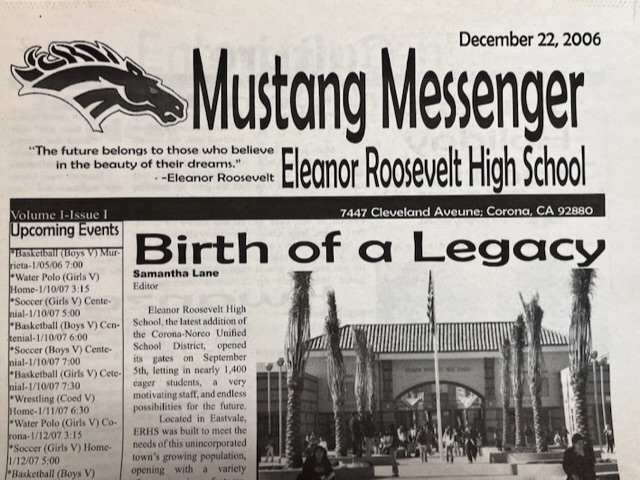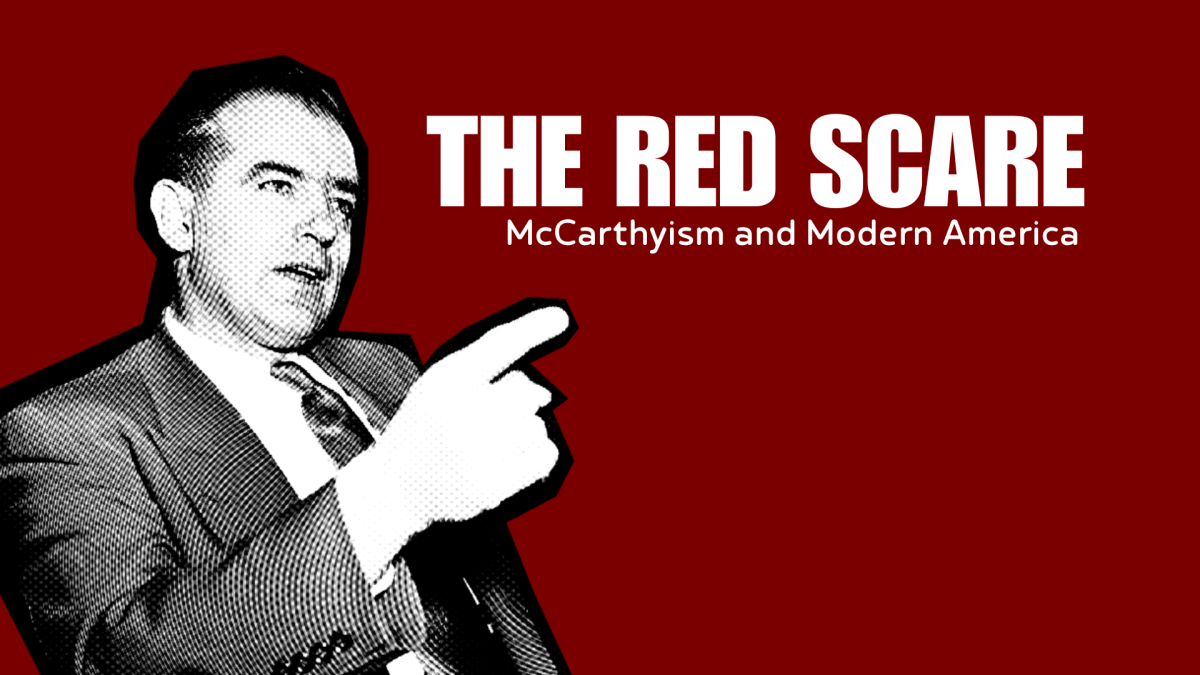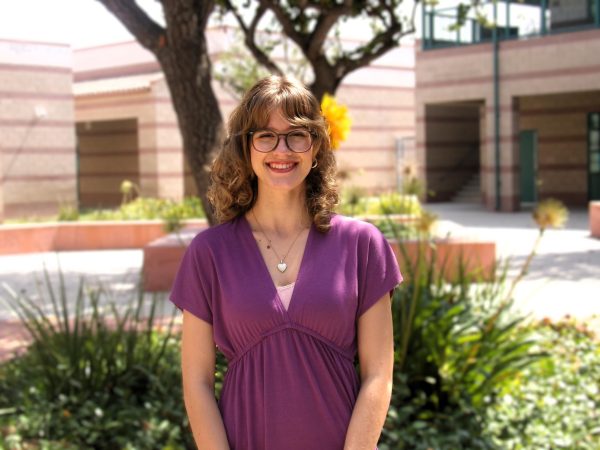From the printing press to typewriters, to video cameras and Apple laptops; how we present news constantly evolves, but journalists have always had the same goal. To tell stories.
Here at the Roosey Review, we do the same thing, share stories, opinions, and beliefs, and give a voice to those who have something to say. And we have some history of our own! Back in the early 2000s Roosevelt writers published the “Mustang Messenger” which was a printed newspaper featuring articles, crossword puzzles, and campus updates.
We’ve come a long way since then but are still the same.
Retired journalist John Furey worked as a reporter for 20 years, starting in 1973, and saw news reporting change many times throughout his career.
“One of the first obvious changes that happened right about when I started my career is we’re all using typewriters, we didn’t have computers.” Furey laughs, “Newspapers gradually decided that computers were the way to the future, and this was before cellphones and really before email.”
Typewriters were used up until the 1980s, and many lifelong journalists had been using typewriters for their entire careers. Now they were being asked to learn something completely foreign to them. Keep in mind this was when computers were still very new, they were blocky boxes with rubber keyboards. So this was very new technology to most, and it wasn’t the most reliable.
“A lot of times you were having computers crash. You’d be writing a story and if you didn’t have any backup, you’d spend maybe an hour typing up a story, and something would happen. And your story would disappear!” Furey reminisces. “That would make people really angry.”

It was a learning curve for all, but it brought about a faster, more efficient way of writing articles. The news could get out much faster.
We’re very familiar with the image of a reporter carrying around a tiny notepad, furiously scribbling notes down. Before computers or cellphones that’s what reporters had to do, but they were still expected to deliver a story as quickly as possible. This was a situation Furey was very familiar with.
“You don’t have time to get back y’know to get that story written a lot of times if it’s the daily newspaper. So you’d have to call the office and dictate the story. And there would be an editor and he’d be typing what you’re dictating.” He explains.
Nowadays everyone is used to getting news instantly, think of how fast you can send out a text while your teacher’s back is turned. It’s an instant thing, so much so that people often forget there are real people behind these articles. Journalism will forever evolve, but there is one thing that will never change, the community aspect of it.
Furey describes it as, “A team effort, you’ve got the reporter going out and getting the news, maybe writing the rough or the initial draft. And then you’ve got an editor correcting mistakes, misspellings, stuff like that. But then you have another editor that’s deciding if they need to cut the story or add to it.” He shares.
Another important aspect of newspapers was copy editors. These people were deciding where, what page, and what section an article was going to go on. But nowadays with the decline of newspapers, things look different. Just think about it, when was the last time you read a newspaper, or your parents? You probably don’t remember.

That’s not to say that younger people aren’t keeping up with the news nowadays, it just looks different. Jakob Venegas, a junior at Roosevelt, shares how he keeps up with the news.
“I personally use today’s sponsor Ground News. It’s an online platform, you’ve probably seen an ad for it on YouTube.” He explains.
One of the greatest losses that journalism has experienced over the past couple of decades is the loss of trust. People don’t have confidence in the media anymore. Venegas also shared his opinion on trusting news nowadays.
“My honest opinion is that the news is very biased depending on what source.” He says, “And I think it’s very difficult to get unbiased information because you don’t know who is biased against what and how that affects their reporting.”
This seems to be a common feeling among people. Recent studies have shown that only 7% of adults have a great amount of trust in the news.
So the question is why is journalism still important? Why should we still care?
Furey recalls one of his fellow reporters at the time describing journalism as “Basically the best liberal arts education you’ll ever get.”
It’s a career full of experiences and opportunities. Furey shared many stories he worked on, and the many different people he met as a reporter. These are stories and people he still remembers to this day. Our connections with people last a lifetime, and sharing stories is one of the most special things humans can do. Journalism may be different now, and knowing what and who to trust on the news is especially difficult, but at its core journalism is about connection. It’s about showcasing raw human experiences, it’s about knowing you aren’t lost when the world seems to be in chaos.









Jakob Venegas • Jan 27, 2024 at 2:47 pm
Hey that Jakob Venegas guy seems really smart. He really knows what he’s talking about